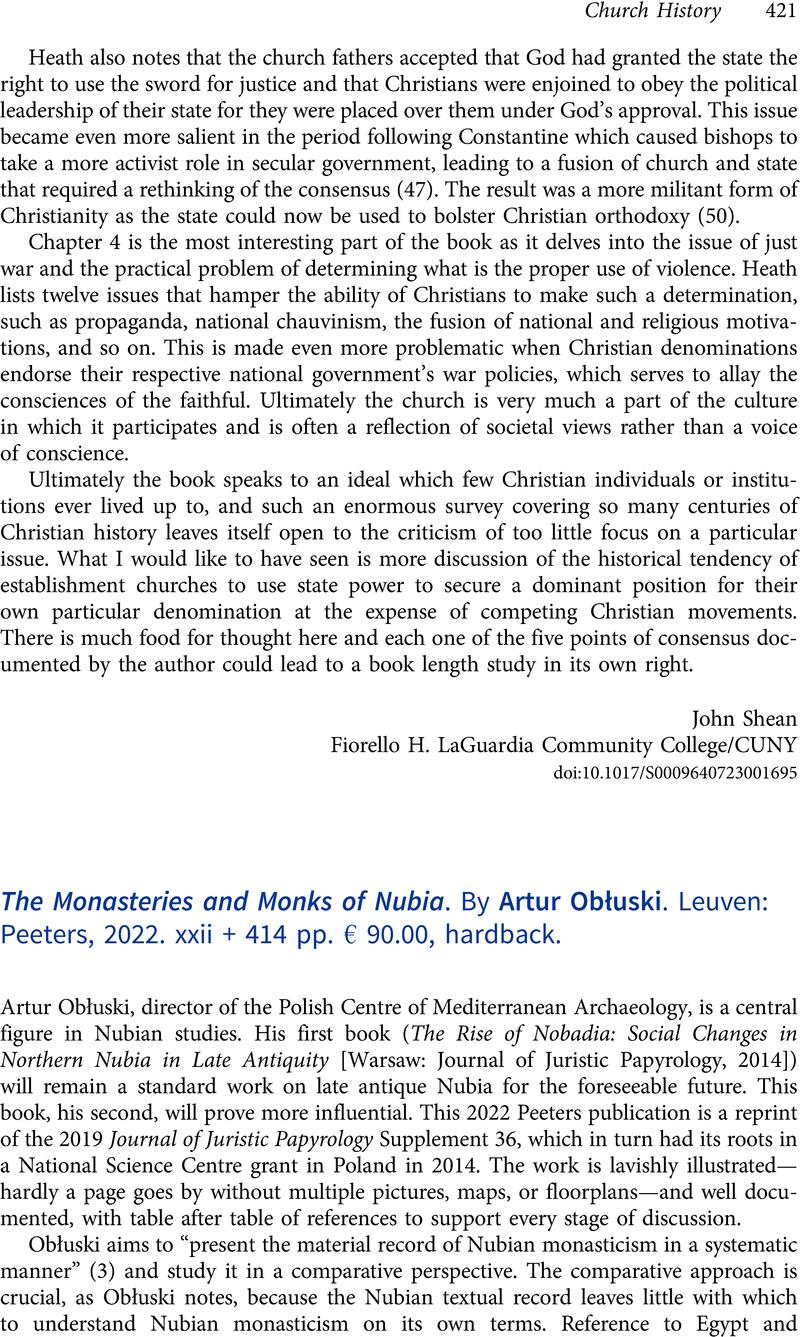No CrossRef data available.
Article contents
The Monasteries and Monks of Nubia. By Artur Obłuski. Leuven: Peeters, 2022. xxii + 414 pp. € 90.00, hardback.
Review products
The Monasteries and Monks of Nubia. By Artur Obłuski. Leuven: Peeters, 2022. xxii + 414 pp. € 90.00, hardback.
Published online by Cambridge University Press: 02 October 2023
Abstract
An abstract is not available for this content so a preview has been provided. Please use the Get access link above for information on how to access this content.

- Type
- Book Reviews and Notes
- Information
- Copyright
- Copyright © The Author(s), 2023. Published by Cambridge University Press on behalf of American Society of Church History


